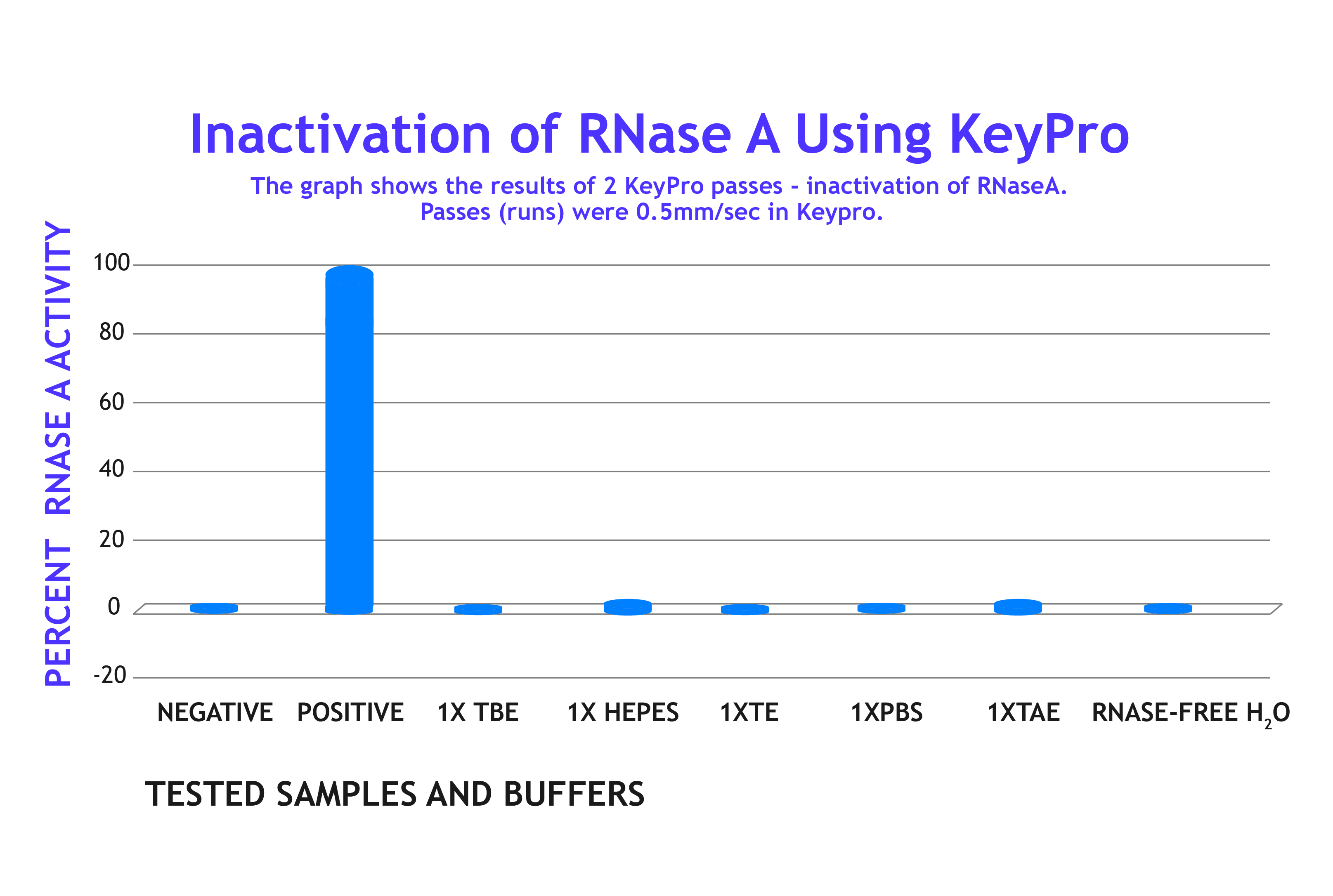Many experiments are carried out in Tris buffers because they are nearly bulletproof at maintaining a neutral pH regardless of what you (metabolically) throw at them. These buffers cannot be subjected to the same decontamination methods, as DEPC attacks the amino groups of the Tris, limiting its buffering capacity and destroying itself in the process so leaving it unable to inactivate any contaminating RNase.
Research at Phoseon has discovered that a UV wavelength of 278 nm can target RNase A, leaving it irreversibly inactivated, with no drift on the pH or buffering capacity of the Tris buffers. Phoseon's KeyProTM UV LED decontamination system successfully inactivated RNaseA in all buffers tested using the: PBS, TE, HEPES, TAE, and TBE. RNaseA was inactivated after two sequential 0.5mm/second scans (4 minutes 54 seconds each) using the 80% 278 nm. KeyPro takes less than 5 minutes to decontaminate Tris buffers of RNase and prepare them for use. The experiment can be run immediately afterwards. This saves huge amounts of time in comparison to the traditional methods of decontamination.
UV Inactivation of RNaseA Contamination in Buffers

Categories: Laboratory Decontamination, KeyPro Instrument

